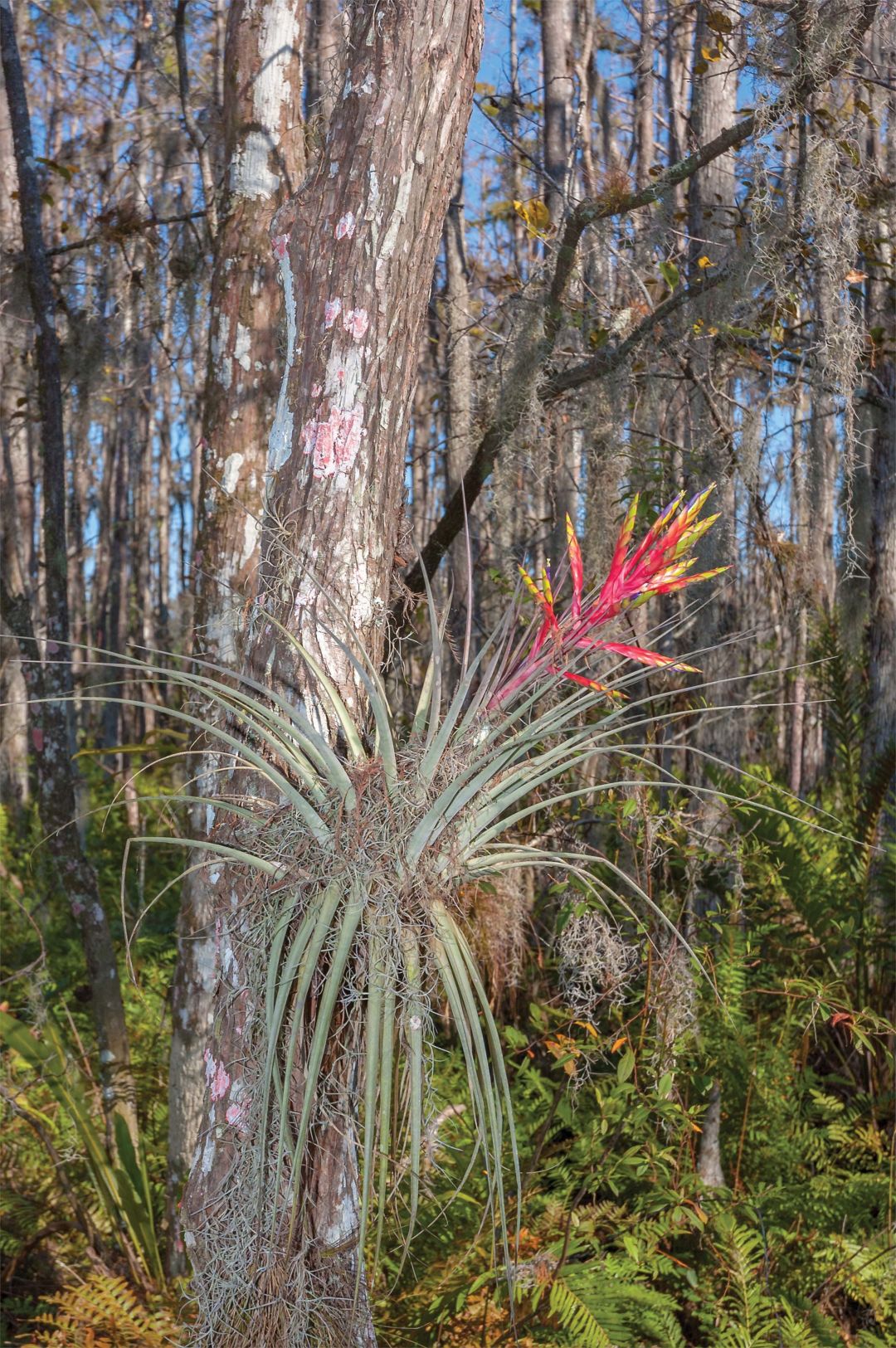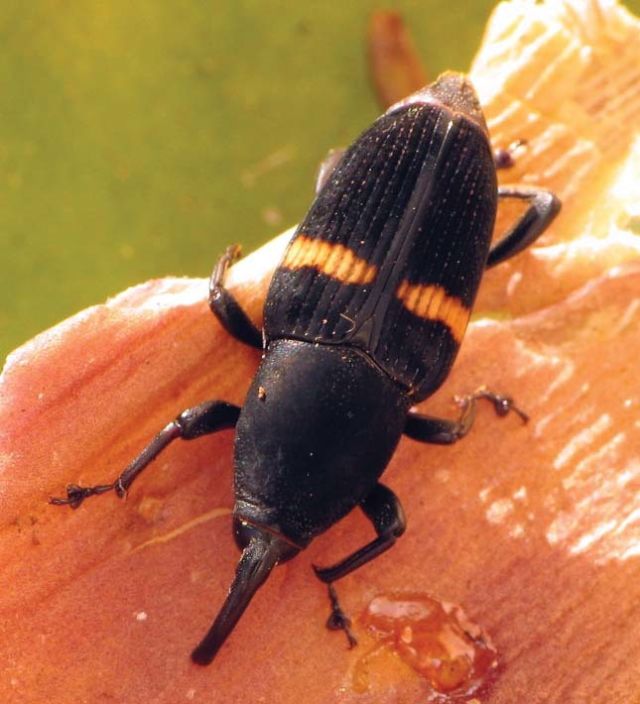Weevils Are Destroying Florida's Bromeliads. What Can We Do?

Selby Gardens researchers are trying to save wild bromeliads like this red cardinal air plant.
Image: Shutterstock
The insects arrived undetected. More than 30 years ago, unsuspecting workers at a nursery in Broward County unloaded a shipment of ornamental bromeliads infested with weevils from Central America. By the time agricultural inspectors discovered the bugs, it was too late. The weevils had spread like wildfire.

A Mexican bromeliad weevil
Today, Mexican bromeliad weevils have eaten their way across Florida, wreaking havoc on wild bromeliad populations from coast to coast, and as far north as Volusia County. In places, populations are down as much as 90 percent. Twelve out of 16 native species are threatened or endangered by the weevils.
Conservationists are now racing to control this invasive pest. Last November, scientists met for the Florida Bromeliad Conservation Working Group at Marie Selby Botanical Gardens, one of the world’s top bromeliad research centers, to brainstorm possible solutions.
It’s not an academic pursuit. Florida’s native bromeliads are air plants, or epiphytes, plants that live on other plants. Their disappearance means bad news for many native species. Bromeliads act as a sort of oasis. Their leaves collect water and form a tank-like habitat, where microbes and invertebrates reside. Vertebrates such as frogs seek refuge within the leaves during dry seasons.
Epiphytes were once common in Florida’s forest canopies. Spanish moss, a species unthreatened by bromeliad weevils, continues to grow prolifically, dangling from branches like witches’ hair. But species such as the cardinal air plant, with its conspicuous red flower spike, and the giant air plant, which can grow over six feet tall, are now rare in the wild. The weevils also attack pineapples, putting organically grown plants at risk, although common backyard bromeliad varieties, such as those with waxy, colorful leaves, are largely unaffected by the pests.
Sporting black wings, a reddish horizontal stripe, and a hooked snout like Gonzo the Muppet, Mexican bromeliad weevils are almost cute, for an insect. But they’re ruinous little creatures. Mature weevils lay their eggs in bromeliad leaves, where larva hatch and eat their way to the stem, killing the host plant. In less than two months, an adult weevil emerges from the detritus and the cycle begins again.
In the past, scientists have attempted to control the weevils with flies whose life cycle involves eating the pests, much like the weevils eat bromeliads. The fly trial proved unsuccessful, so conservationists are now taking more hands-on approaches, from protecting wild specimens with anti-weevil cages to dispersing bromeliad seeds far and wide with leaf blowers.
At Selby, research botanist Sally Chambers is getting high-tech. Chambers and her team will examine the genome of various bromeliad populations to hopefully identify molecular differences that have helped some populations bounce back after weevil attacks, while others continue to suffer. The goal is to “see if there's any genetic underpinning as to why certain areas are more resistant than others,” Chambers says.
By discovering a genetic blueprint for weevil resistance, scientists may be able to introduce those genes more broadly into the wild via hybrids that carry the desirable DNA. However, Chambers warns, they must be careful not to create another crisis in the process.
“If we identify a single population that shows it's more resistant than others, we don't want to take individuals from that population and spread them throughout the state, because that means we're limiting the amount of genetic diversity,” she says. “If another pathogen came along, there isn’t as much genetic diversity to allow for natural resistance.”
Weevils alone aren’t to blame for the plight of Florida’s air plants. Poaching and habitat loss due to urban sprawl pose significant threats to the survival of bromeliads. So too do people who rip them out of trees, mistaking air plants as harmful to their hosts.
Elizabeth Gandy, a curatorial assistant at Selby who works with bromeliads, encourages people to help protect these imperiled species by leaving bromeliads where they find them. “They are not parasites,” she says. “They’re not doing anything to harm the host tree.”
Meanwhile, conservationists will scramble to find a defense against the weevil. With luck and a lot of science, Florida’s air plants may remain ornaments among the branches.

